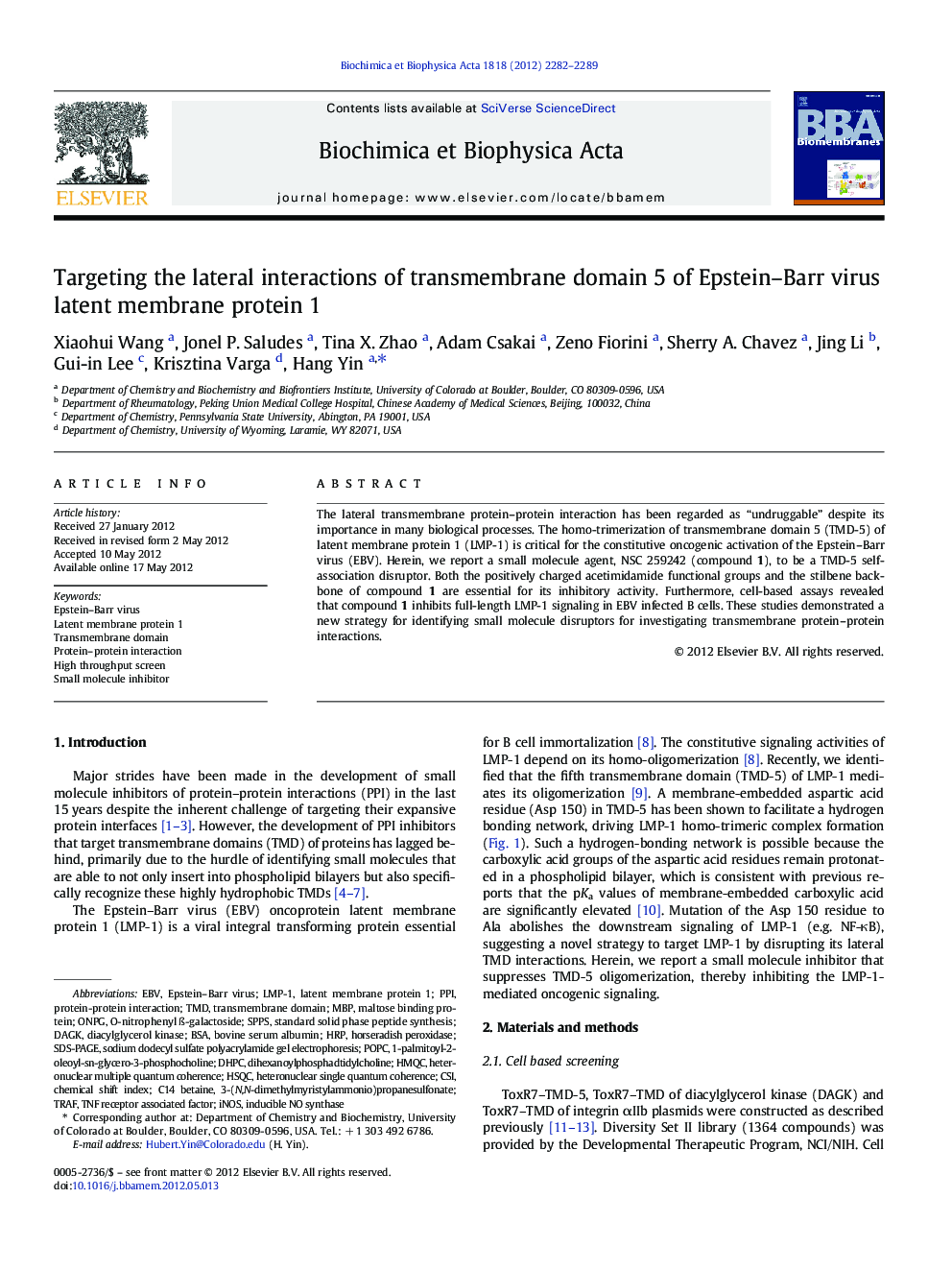| Article ID | Journal | Published Year | Pages | File Type |
|---|---|---|---|---|
| 1944454 | Biochimica et Biophysica Acta (BBA) - Biomembranes | 2012 | 8 Pages |
The lateral transmembrane protein–protein interaction has been regarded as “undruggable” despite its importance in many biological processes. The homo-trimerization of transmembrane domain 5 (TMD-5) of latent membrane protein 1 (LMP-1) is critical for the constitutive oncogenic activation of the Epstein–Barr virus (EBV). Herein, we report a small molecule agent, NSC 259242 (compound 1), to be a TMD-5 self-association disruptor. Both the positively charged acetimidamide functional groups and the stilbene backbone of compound 1 are essential for its inhibitory activity. Furthermore, cell-based assays revealed that compound 1 inhibits full-length LMP-1 signaling in EBV infected B cells. These studies demonstrated a new strategy for identifying small molecule disruptors for investigating transmembrane protein–protein interactions.
Graphical abstractFigure optionsDownload full-size imageDownload high-quality image (308 K)Download as PowerPoint slideHighlights► Propose a cell based screen strategy for identifying TMDs disruptors ► Identified an LMP-1 TMD-5 self association disruptor, NSC 259242 ► NSC 259242 disrupts TMD-5 homotrimerization and inhibits LMP-1 signaling
